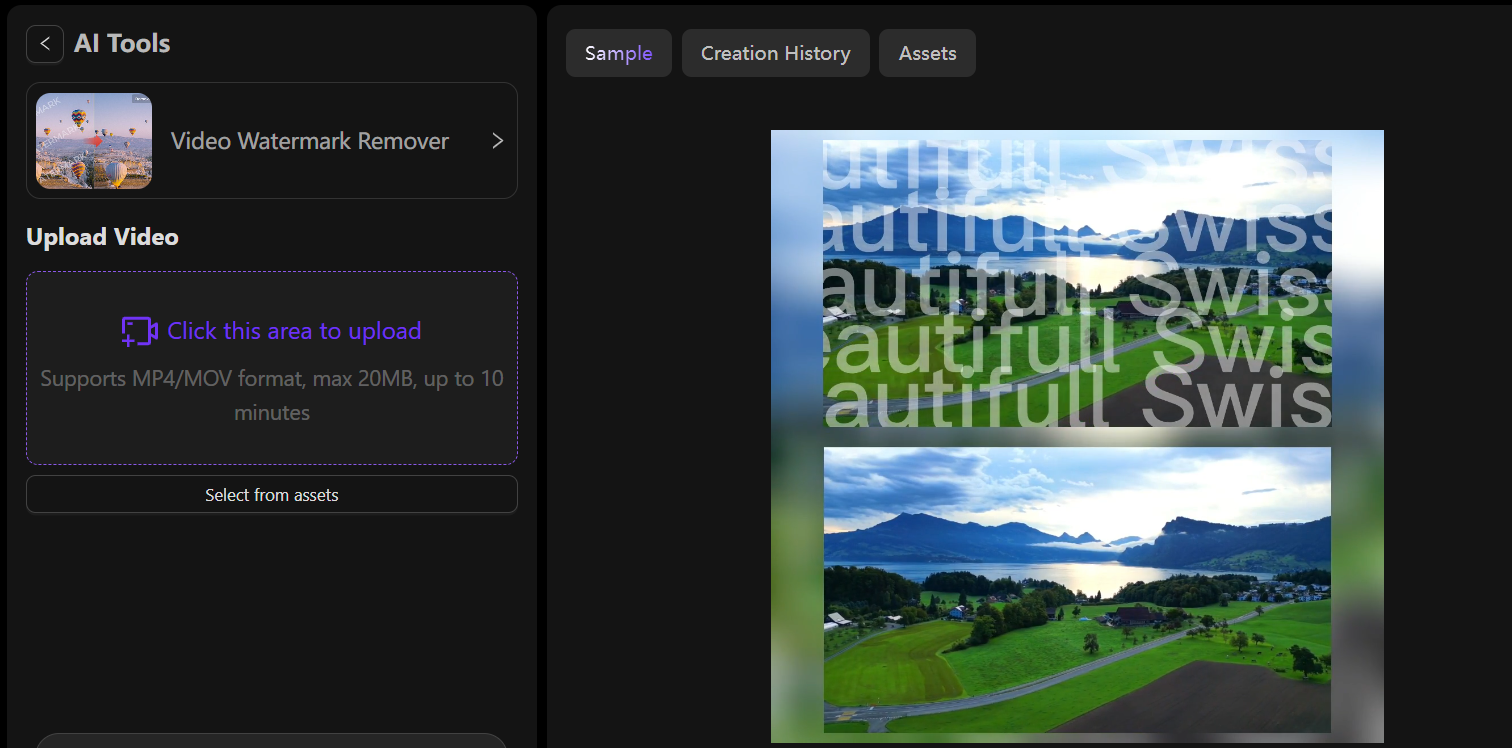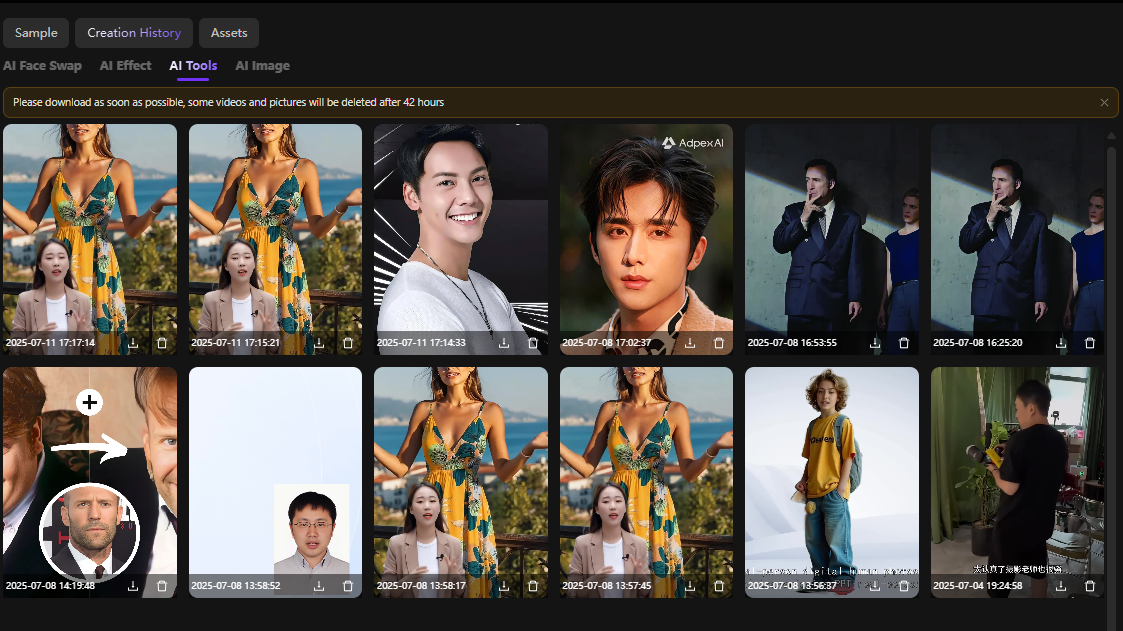Say Goodbye to Watermarks: The Quick and Easy Guide to Clearing Your Content

Watermarks are like the "Do Not Disturb" signs —they’re there to protect content from being copied or stolen. But sometimes, we just need a clean, watermark-free version for personal or professional use. This article walks you through a super-effective method for removing watermarks, while making sure you're aware of the pitfalls that come with this process.
Using ApexAI to Remove Watermarks
ApexAI is your go-to online watermark remover from video and image content. It’s powered by cutting-edge AI that can remove watermarks quickly and seamlessly, all while maintaining the quality of your media. Whether you're removing watermarks from a still image or trying to freeremove watermarks from a video online, ApexAI has you covered.

Upload Your File
First, visit ApexAI’s website. You’ll be prompted to upload your video or image file—no complex setups required!
Select the Watermark Area
First, you need to select the photo from which you want to remove the watermark. Then you can upload it to AdpexAI. It should be noted that AdpexAI has many functions. This tool can not only remove watermarks but also add subtitles. So you need to choose the requirements you need and then meet them.
AdpexAI utilizes advanced AI image restoration technology to precisely remove watermarks from videos. Many annotations such as logos, timestamps or text overprints can be accurately removed to ensure clear and seamless content.

Let ApexAI Do Its Magic
Once the watermark area is selected, the AI watermark removal tool can ensure that the watermark disappears, making your content look fresh and natural. Whether you are removing watermarks from online videos or restoring images, this tool can ensure that everything goes smoothly every time.
Download and enjoy
After the miracle happens, you can preview the result. If it meets your standards, just click to download. AdpexAI ensures that the output remains of high quality, so no one will notice that the watermark was ever there. This is the ideal video watermark remover for free online use by those who want fast and reliable results.
Copyright Concerns: Are You Authorized to Remove That Watermark?
Before you consider removing a watermark, you should ask yourself, "Do I have the right to use this content?" In some situations, doing so may constitute copyright infringement. Let's give an example. It would be akin to taking someone else's lunch from the fridge and eating it in front of them without permission.
Therefore, whether you're using an online video watermark remove tool or others, you should keep ensuring that you have the right to use the content. If you're planning to use a watermark-free image or video for commercial purposes (like social media, e-commerce, or advertising), confirm that the material has been authorized for use, or buy the necessary licenses. If you find the content on a free material website, check the licensing terms to avoid any surprises.
Quality Concerns: Is Your Content Looking as Good as Before?
Think about it: if you try to remove video watermark online from a complex scene or detailed background, the results might not be perfect. One more point, unless your watermark removal tool is very advanced, you may get a strange patch.
So we usually say that watermark removal is effective, but sometimes it can affect the quality of your content.The removing tool strives to keep the quality intact, but if the watermark is too large or positioned over intricate details (like a person's face or complex graphics), it may affect the final result. Always preview the content before downloading it. If you’re not satisfied, you might need a more manual approach with professional software.

Ethical Dilemma: Just Because You Can, Doesn’t Mean You Should
In addition, you also need to pay attention to moral issues. Watermarks are added to the content to protect the rights of creators. In some special circumstances, although removing watermarks is not illegal, from the perspective of public opinion, it is not a good behavior.Of course, if the relevant content is only related to yourself, you can freely delete your own watermark. But when it comes to other people's work, it is recommended that you contact the person involved first and obtain permission.
Avoid Using Unauthorized Content Over and Over Again

1.Authorization First, then Use.
Regardless of whether the image is attributed or the source is indicated, written authorization from the copyright owner must be obtained in advance, and the scope of use must be clearly defined.
2.Fully preserve evidence.
Keep authorization agreements, copyright notices, communication records, etc. These are all important materials for presenting evidence in case of disputes. For instance, an authorization agreement can prove the legality of use, and communication records can reflect the negotiation process of both parties regarding the use of pictures.
3.Avoid modifying the original image.
Do not crop watermarks or adjust the core content of the image. Respect and protect the integrity of the work.
4.Be cautious in judging "fair use".
Only use pictures within the scope explicitly permitted by law, such as a few quotations, comments, and explanations, to avoid overextending the interpretation of "fair use".If you want to use watermark-free content often, consider subscribing to a paid content library, or purchasing the proper usage rights.
This way, you won’t be caught in any copyright-related problems. And hey, creating your own content from scratch is always a foolproof way to go!
About the author


Мы помогаем вам найти, управлять
и расти вместе с теми, кто двигает людей.

